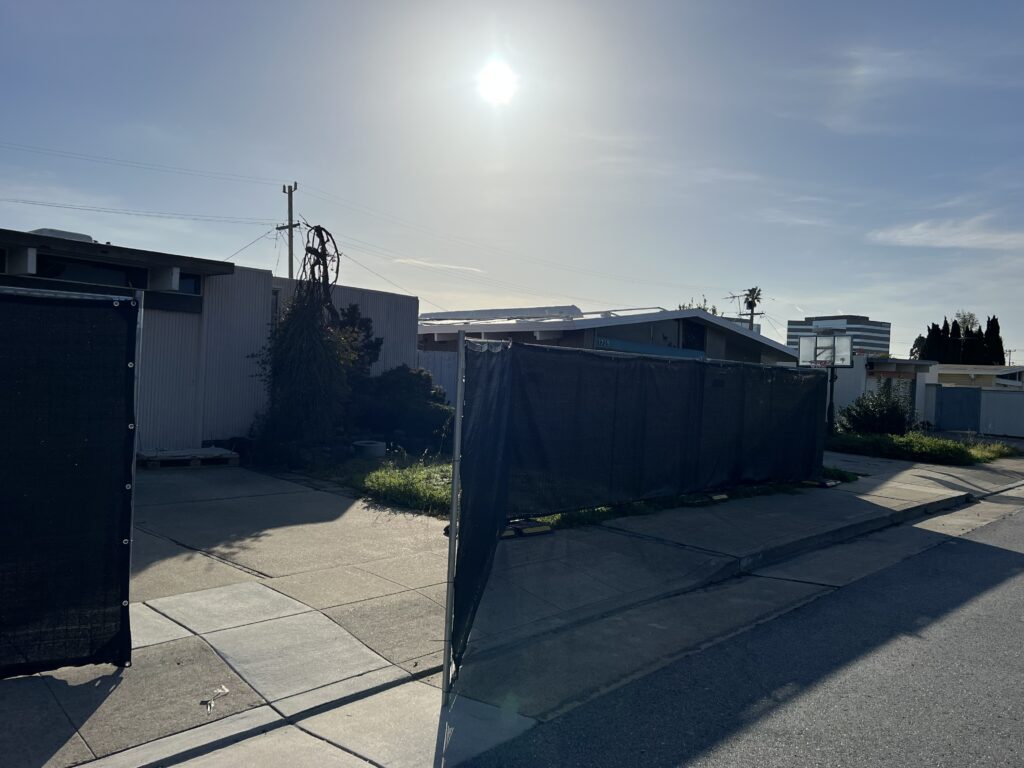
Proper fencing on a construction site is important. It protects both passersby and workers from hazards and keeps trespassers out. Construction sites are subject to various regulations and safety standards, and having proper temporary fencing ensures that the site complies with those requirements. And the way a construction company manages its site creates its reputation. A poorly installed or unmaintained fence can give a bad name for lack of attention to detail or disregard for safety and security.
In this post, we’ll discuss tips for installing and maintaining temporary fencing.
Installation Tips
Choosing the right type of fence for construction sites
There are lots of different kinds of fencing out there. There’s chain-link, block, panel, pedestrian fencing, square-topped, round-topped… How to choose?
Take into account your site’s location – is this a commercial area or a residential neighborhood? Consider how long the project will take and how big it is. A larger or longer project will need a sturdier fence. You’ll also want to check the security requirements in your area. If you plan to rent a fence, the rental company may be able to help you choose.
Preparing the site for installation
It’s important to prepare the ground properly to ensure that your fence is installed securely and will provide the necessary protection. Here are some tips for getting the site ready:
- Clear the area and remove any debris or rocks that could interfere with the installation process or prevent the fence from sitting level on the ground.
- If the ground is uneven or sloping, you might need to level it before installing the fence. You can do this either with a shovel or rake or with a bobcat or excavator.
- Mark out the perimeter. Use stakes or spray paint to delineate where you’ll install the fence. This way, you’ll be sure that it gets installed in the right spot and that you’ll order the right amount of panels and gates.
Anchoring techniques for different surfaces
You’ll need to anchor your fence securely so that it can provide the protection it’s for. The type of anchoring you should use depends on what kind of surface you’ll anchor the fence to.
- Concrete To anchor a fence to a concrete surface, drill holes into the concrete with a hammer drill, insert expansion anchors into the holes, and use a wrench to tighten them. Then attach the fence panels to the anchors with bolts or other fasteners.
- Asphalt To anchor a fence to an asphalt surface, use a core drill to create holes in the asphalt, and then insert asphalt anchors into the holes. Then attach the fence panels using bolts or other fasteners.
- Soil To anchor a fence in soil, dig holes at regular intervals along the fence line and insert fence posts into the holes. Then pack the soil tightly around the posts to secure them in place.
- Grass or other soft surfaces To anchor a temporary fence in grass or soft earth, use fence stakes to secure the fence panels in place. You can drive the stakes into the ground with a hammer, and then attach them to the fence panels with clips.
- Paved surfaces To anchor a temporary fence to the pavement, use concrete blocks to anchor the fence panels in place. Place the blocks at regular intervals along the fence line, and use clamps to attach the fence panels.
When you use the right anchoring technique, you’ll be sure that the fence stays stable and secure throughout the project.
Tips for securing the fence
Every season brings its own weather – and your fence will have to withstand that. Whether it’s wind, rain, or snow, you should secure your fence so it stays steady. Here’s how:
- Use concrete footings to give extra stability to your fence, especially in areas with high winds. Dig the footings deep enough to provide a solid foundation.
- If you’re in an area with strong winds, install windbreaks to reduce the impact of the wind on your fence. You can use various materials like mesh or tarpaulin.
- Check local regulations. There might be regulations for fence height and design to help ensure your fence is secure and safe.
Regularly maintain your fence to help prevent environmental damage. Check regularly for any signs of damage or wear and tear, and repair as needed.
Maintenance Tips
Maintaining your fence is super important. Make sure to inspect it every so often for damage, wear and tear, and proper alignment. If you find any damage or signs of wear, repair it right away to prevent further damage or safety hazards. (That will also help keep trespassers off the site.) You’ll also want to check that the fence is secure and stable throughout the construction project. If you notice that it’s very susceptible to wind and rough weather, reinforce it with sandbags or concrete blocks.
SOS Toilets Temporary Fence Rental
Installing and maintaining your temporary fences properly is what keeps your site safe and secure. At SOS Toilets, we believe that a good temporary fence rental is something that every construction site deserves. If you’re looking to rent good quality fences in the Bay area, reach out to us. We’ll help you choose the fence that will work best for your site.
We look forward to working with you!
